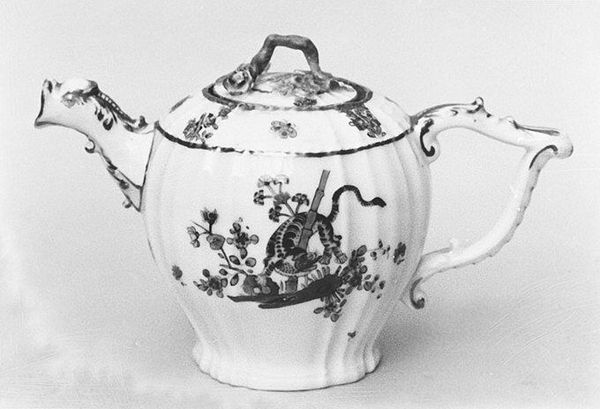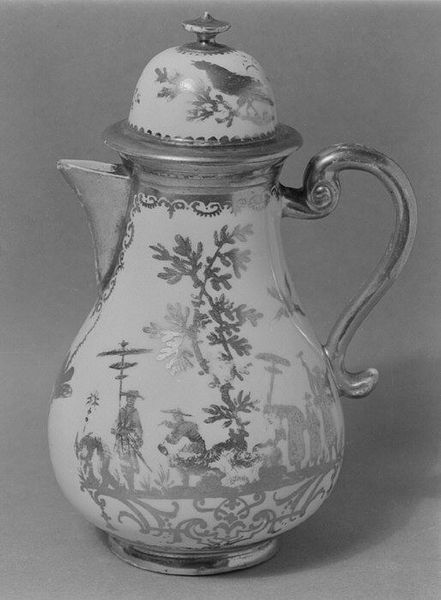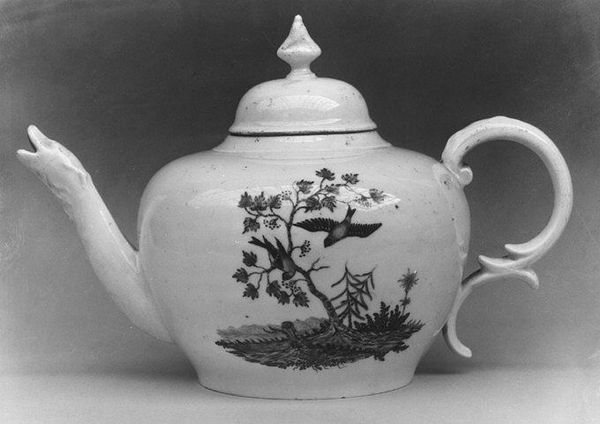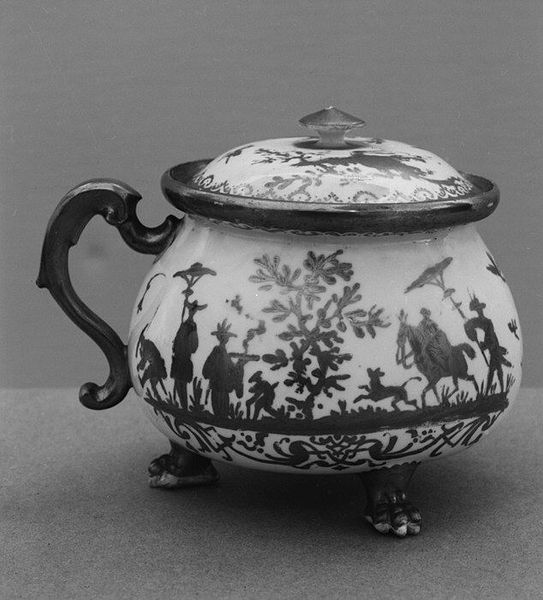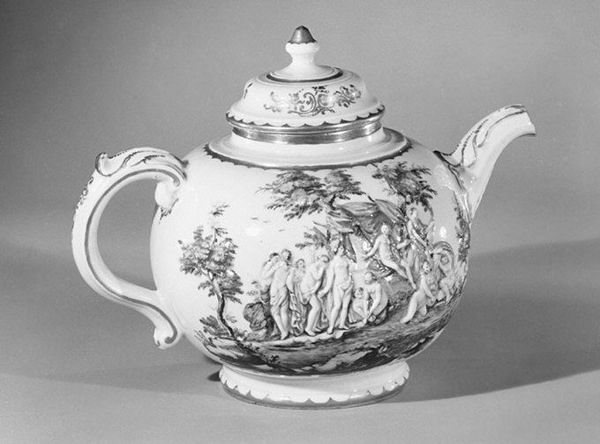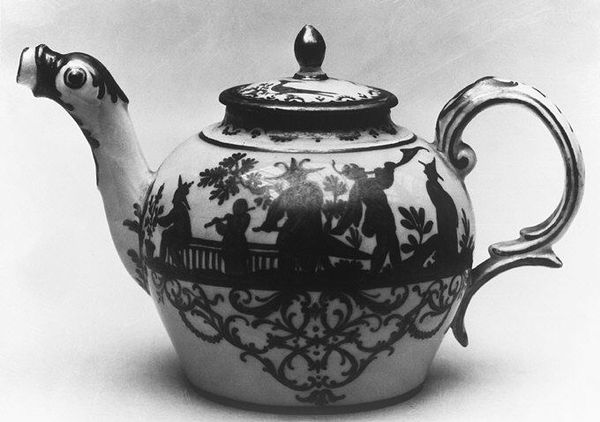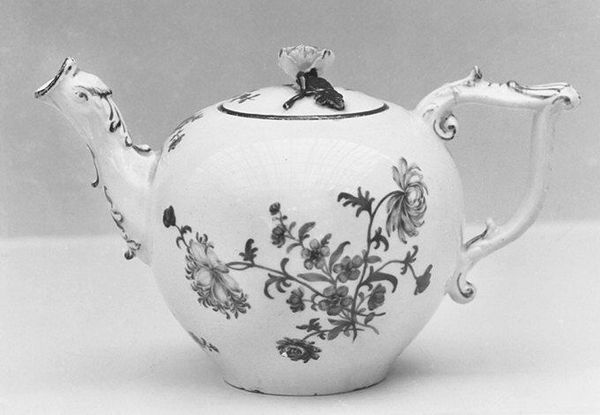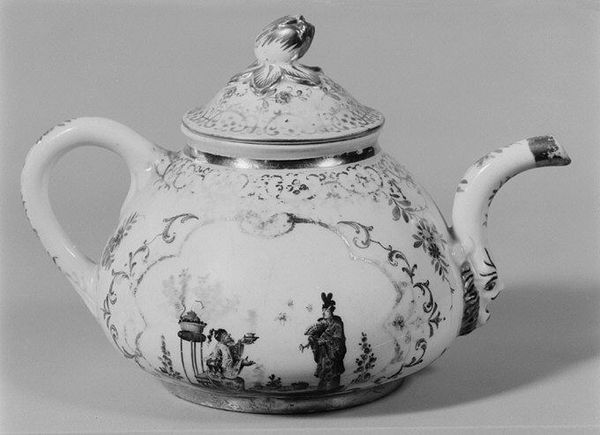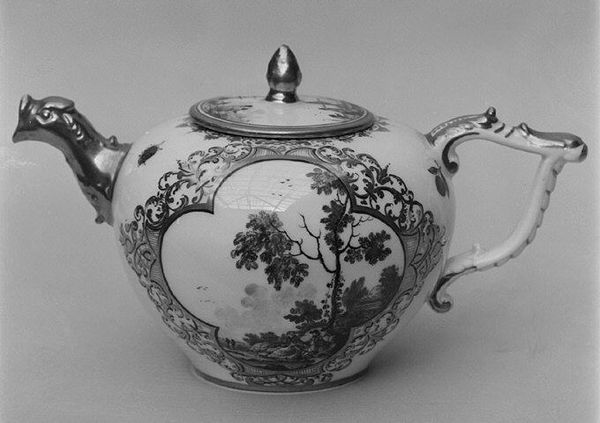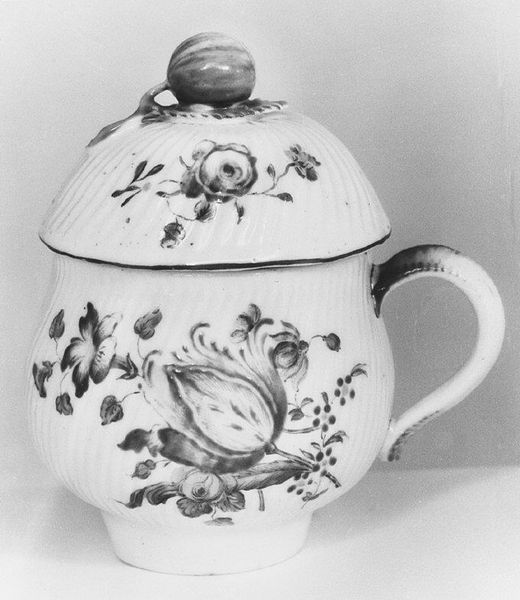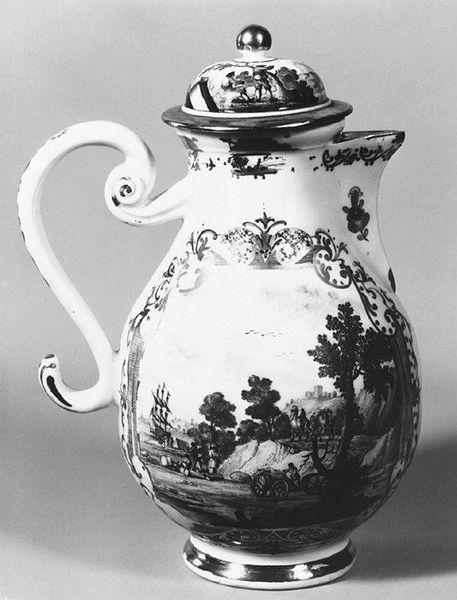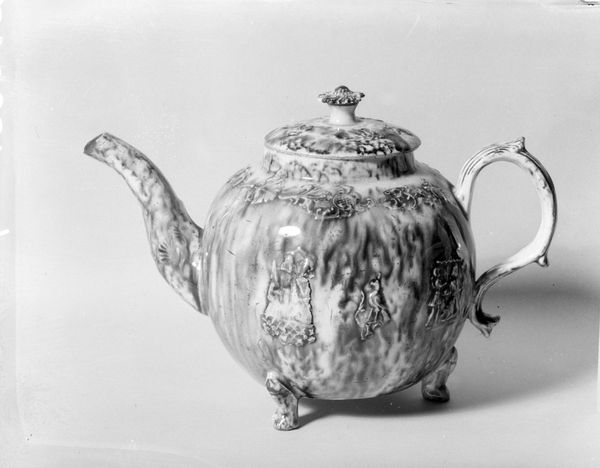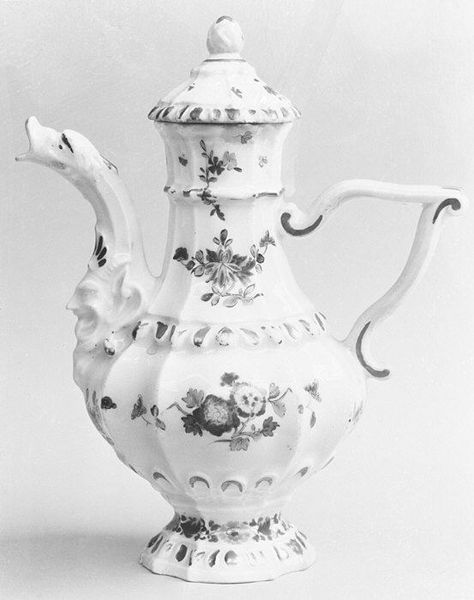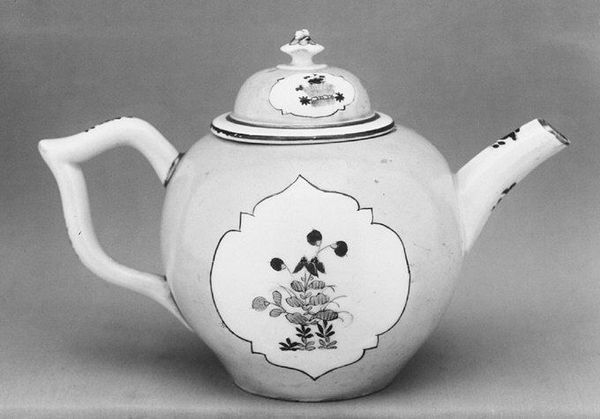
ceramic, porcelain, sculpture
#
ceramic
#
flower
#
porcelain
#
sculpture
#
black and white
#
monochrome
#
decorative-art
#
monochrome
Dimensions: Height: 6 in. (15.2 cm)
Copyright: Public Domain
Curator: This monochromatic marvel is a porcelain teapot created by the Ludwigsburg Porcelain Manufactory between 1765 and 1775, currently residing at The Metropolitan Museum of Art. Editor: My immediate impression? It’s deceptively simple, yet profoundly elegant. The rounded form creates a delightful tension with the sharp precision of the botanical illustration. Curator: Indeed, the flowers serve as potent symbols of the period. We see recurring themes of nature appropriated into domestic, controlled forms—mirroring societal values where wilderness and wilder passions are tamed, brought to order, displayed for civil company. Editor: I'm fascinated by the surface decoration. Notice how the botanical designs aren't simply decorative. They follow a compositional logic, emphasizing the teapot's volume, creating an almost spherical, self-contained world on a tiny scale. The color contrast intensifies the detail while still being constrained. Curator: The choice of a muted palette adds to this idea of control. We might initially read the lack of vivid color as merely stylistic, but consider it could be intentionally subdued, perhaps signifying restrained emotion and promoting values within polite society. Even tea, think about the role of tea consumption during that period! Editor: It’s brilliant! The curve of the handle mirrors the sprout creating visual unity. The glaze used to produce this item softens hard edges. Each element reinforces a single elegant purpose: domestic bliss via constrained beauty. It does this successfully, considering the production year. Curator: Yes, it encourages a deep dive into how beauty can reflect order, or aspiration for such. By recognizing its history and the meanings behind its patterns, we may look at a teapot and start questioning ourselves. The objects we use represent ourselves—the porcelain reminds me of a mirror through time. Editor: Analyzing it this way, the simple object has suddenly become more. I thought of porcelain, balance, elegance...and the cultural subtext is now unmissable. Curator: Precisely, and this interplay between form and cultural value brings a depth that a cursory glance simply misses. Editor: Agreed. What initially appears purely ornamental reveals layers of deeper meanings and the intent for culture-making when one looks closer.
Comments
No comments
Be the first to comment and join the conversation on the ultimate creative platform.
